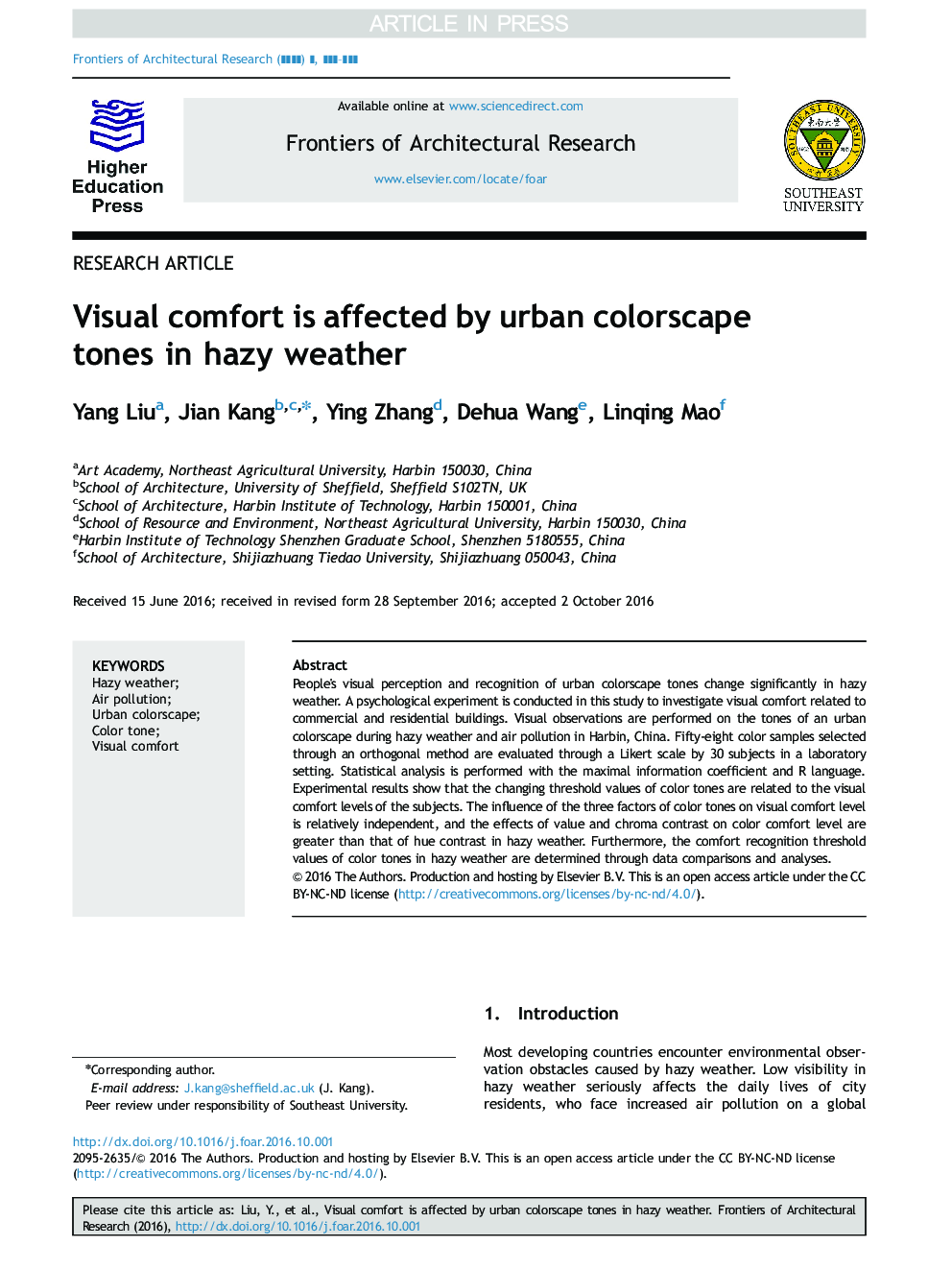| Article ID | Journal | Published Year | Pages | File Type |
|---|---|---|---|---|
| 6742605 | Frontiers of Architectural Research | 2016 | 13 Pages |
Abstract
People׳s visual perception and recognition of urban colorscape tones change significantly in hazy weather. A psychological experiment is conducted in this study to investigate visual comfort related to commercial and residential buildings. Visual observations are performed on the tones of an urban colorscape during hazy weather and air pollution in Harbin, China. Fifty-eight color samples selected through an orthogonal method are evaluated through a Likert scale by 30 subjects in a laboratory setting. Statistical analysis is performed with the maximal information coefficient and R language. Experimental results show that the changing threshold values of color tones are related to the visual comfort levels of the subjects. The influence of the three factors of color tones on visual comfort level is relatively independent, and the effects of value and chroma contrast on color comfort level are greater than that of hue contrast in hazy weather. Furthermore, the comfort recognition threshold values of color tones in hazy weather are determined through data comparisons and analyses.
Keywords
Related Topics
Physical Sciences and Engineering
Energy
Renewable Energy, Sustainability and the Environment
Authors
Yang Liu, Jian Kang, Ying Zhang, Dehua Wang, Linqing Mao,
